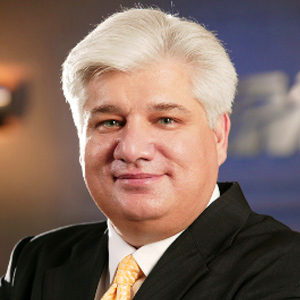3 Apr 2012
0 CommentsSocial Innovation – Can Social Sector Learn from Tech Startups?
It is notable that much of the recent trend towards Social Innovation has come from people who began their careers in technology startups, in Silicon Valley or other technology clusters. Some notable examples include:
 Bill Gates, partly at the instigation of Warren Buffet who added his personal fortune to that of Gates, left Microsoft, the company he built, to dedicate his life to innovative solutions to large world issues such as global health and world literacy through the Bill and Melinda Gates Foundation
Bill Gates, partly at the instigation of Warren Buffet who added his personal fortune to that of Gates, left Microsoft, the company he built, to dedicate his life to innovative solutions to large world issues such as global health and world literacy through the Bill and Melinda Gates Foundation
 Started by Paul Brainerd, Seattle-based Social Venture Partners International is innovating at the intersection of technology and venture capital, with Venture Philanthropy. Paul sold Aldus Corporation (an innovator in desktop publishing applications, including Pagemaker) to Adobe in the mid 1990s. In his mid-40’s at the time of the Adobe acquisition, he was young enough to seek a significant and active social purpose in his life.
Started by Paul Brainerd, Seattle-based Social Venture Partners International is innovating at the intersection of technology and venture capital, with Venture Philanthropy. Paul sold Aldus Corporation (an innovator in desktop publishing applications, including Pagemaker) to Adobe in the mid 1990s. In his mid-40’s at the time of the Adobe acquisition, he was young enough to seek a significant and active social purpose in his life.
 Jeffrey Skoll, a Canadian-born billionaire living in Los Angeles and an early employee of eBay, has numerous activities aimed at Social Innovation including Skoll Foundation, Skoll World Forum on Social Entrepreneurship and Skoll Award for Social Entrepreneurship. Most of his initiatives are aimed at empowering the individual Social Entrepreneurs who are fuelling a new generation of Social Innovation.
Jeffrey Skoll, a Canadian-born billionaire living in Los Angeles and an early employee of eBay, has numerous activities aimed at Social Innovation including Skoll Foundation, Skoll World Forum on Social Entrepreneurship and Skoll Award for Social Entrepreneurship. Most of his initiatives are aimed at empowering the individual Social Entrepreneurs who are fuelling a new generation of Social Innovation.
 Waterloo’s own Mike Lazaridis aims to transform our understanding of the universe itself by investing hundreds of millions of dollars into Perimeter Institute for Theoretical Physicsn and Institute for Quantum Computing, effectively innovating a new mechanism of education and discovery. Notable is that this area of investment is one that may well take years, possibly decades, to show what breakthroughs, if any, are discovered.
Waterloo’s own Mike Lazaridis aims to transform our understanding of the universe itself by investing hundreds of millions of dollars into Perimeter Institute for Theoretical Physicsn and Institute for Quantum Computing, effectively innovating a new mechanism of education and discovery. Notable is that this area of investment is one that may well take years, possibly decades, to show what breakthroughs, if any, are discovered.
Whether or not always attributtable to this connection with technology entrepreneurs, increasingly Social Sector organizations are starting to become much more like the entrepreneurial startups so familiar in the world of high technology. I’ve personally witnessed some of this change, and would like to suggest, that while there remain big differences, the parallels are strengthening over time. The following concepts represent just a small sampling of the key areas of similarity:
1. Founders Versus Artists
Stories are legion of smart, brash (and even mercurial) technology company founders who transform a business sector through the sheer strength of their wills. Many of these founders are “control freaks” and might find employment in conventional jobs a difficult proposition. Venture capital and angel investors have learned to be wary of such founders, citing numerous examples of founderitis – in which uncoachable founders, in a case of “my way or the highway” would rather maintain control than bend to ideas from often more experienced mentors, board members and investors.
Such personalities also exist in the Social Sector. For example, many arts organizations are founded by bright and innovative artistic directors. And yet, many of these same organizations come unravelled by the same mercurial nature that prevents the organization from being properly governed and accountable to funders (investors). With my background on both sides of this divide, the parallels are hauntingly striking.
Since such founders strengths can also be their undoing (or that of their organization), a conscious Board level assessment of such situations is always wise.
2. Running on Empty
Notwithstanding the media coverage of a few lucky technology startups such as Facebook or Google, most technology startups run of little or no significant funding. Many seek to change the world with very small amounts of capital, sometimes no more than several million dollars. The recent trend towards building such small capitalization organizations is called the Lean Startup movement. The challenges inherent in their undercapitalization is often the top complaint of such startups. However, Sergy Brin, the Google co-founder has insightfully observed that “constraints breed creativity” to describe how an underfunded state has led to the discovery of innovative ways to build companies and deliver their products.
Likewise, from my experience the vast majority of charities and nonprofits complain about being undercapitalized, and the reality is that most are. It is a fact of life in the social sector. Only now are we starting to see the emergence of social ventures, which by stealing a page from underfunded technology startups are exploring new business models and ways to deliver social change, often leveraging IT or a different process to vastly reduce costs of program delivery.
3. Technology Changes Everything
We’ve seen the emergence of a world where all information is stored in digital form and people are connected, even while mobile, the role of the web and technology can’t be underestimated. Technology-based startups, because they are small and start from scratch, often approach traditional problems in very non-traditional ways. Revenue and funding models change, as do fundamental ways to organize a business or social enterprise. Social media allows ideas to spread in a viral fashion. We have already seen how organizations like Avaaz can mobilize hundreds of thousands or even millions of supporters globally for both local and international issues of social injustices and poverty. This is a direct analogue to how many people now rely on Twitter or Facebook, rather than a printed newspaper, for much of their news and information.
4. Mission Creep – or the path forward
Technology startups have come to learn that success depends on laser sharp focus, attention to detail and execution of a “pure play” strategy (ie. only do one thing well). Thatparticular discipline has time and time again proven to be effective in a sector where technology change is moving rapidly and most startups are generally considered to be underfunded.
Likewise, Social Enterprises must adopt similar approaches to deal with underfunding and change. Even in today’s more fluid and fast-changing environment, to avoid deadly Mission Creep, Board and management must have developed a complete Theory of Change roadmap to enable Manage to Outcomes.

22 Nov 2012
0 Comments“How ya gonna keep ‘em away from harm?” – The Sequel
Almost four and a half years ago, I penned what some called the obituary of Blackberry (see “How You Gonna Keep ‘Em Down on the Farm”). My intentions in writing that missive were, in fact, quite the opposite. Back in 2008, a year after the first iPhone, Blackberry didn’t appear to be heeding the threat of major market disruption, let alone making a response. I thought that writing such a post might incite some action. Sadly, while I got loads of reaction from all over the world, the one missing piece was that this was singularly not registering inside the “Faraday Cage” of RIM headquarters at Philip and Columbia in Waterloo.
For many years, to continuously hone my expertise as an investor and participant in the next generation mobile ecosystem at VERDEXUS, I have maintained a “production” device and a “testing” device which allows me to sample the greatest number of new applications and platforms in my daily business and personal life. At the time of the 2008 blog, I switched from Blackberry as production device and iPhone as testing device. At that time, I promoted iPhone to production and introduced an early Android device into the testing status.
The four and one-half years since then, representing four to five mobile device generations at the rapid pace in which these are deployed, has seen a lot of innovation and change in the mobile universe. The first production version of Android occurred one month after the aforementioned post. Today, over nine releases later, Android 4.2, known as Jelly Bean, is a mature and polished mobile platform.
As a young platform, Android has long shown promise. Being an open source operating system primarily developed by Google, but customized by various device manufacturers, not to mention the ever-meddling carriers, has been both a blessing and a curse. Initially, Android seemed “rougher around the edges” and more techie in feel than the uber-polished and legendary iPhone experience, which is produced end to end by Apple.
Conversely, the limitations of the Apple closed ecosystem approach are starting overtake the advantages. There are numerous examples. If you simply want to plug in your device via USB and load music and other files, Android shines by bypassing the need to go through iTunes. While iTunes has its advantages, many of us simply want more control over our cross-device media file deployments. Another even more telling example is the recent debacle in which Apple turfed the tried and true Google Maps application in favour of a badly implemented and incomplete version of their own. This is but a single example of where Apple’s legendary quest for control is wearing thin.
While giving more control to mobile application developers has its challenges, it is clear that no one company, no matter how sainted, can determine, let alone sully serve, the desires and needs of the entire mobile universe.
It is a combination of this clear advantage, coupled with the incredible progress inAndroid and its handset manufacturers, that has led me to promote my newest device to production and render the formerly top-billed iPhone second tier status of my test device.
For me that device is the Samsung Galaxy Note 2, which with its 5.5″ screen is sometimes dubbed a “phablet” (ie. a combination of phone and tablet). Essentially a super-sized Galaxy S3, this phone is nimble, fast in computational processing and with speedy network connectivity. I first saw Europeans use it a few months ago, a cool and capable device, but perhaps an acquired taste for some
Perhaps it is simply my poor vision, but the large screen size is versatile and a joy to work with for all sorts of browsing, content and documents. The S Pen stylus, even for those who don’t want to do handwriting or line drawings, transforms the mobile browsing experience by removing the navigation problems on many sites with menus which are small on mobile screens. Samsung has even developed an SDK around the S Pen which could create a whole new application ecosystem, assuming this next generation stylus gains sufficient market traction.
Is my recent promotion of Android to top device spot the end of my quest for mobile perfection? Absolutely not! In fact, only one week ago, I personally promised my colleague Alec Saunders, the ubitquitous and transformational new VP of Developer Relations for Research In Motion, that I will definitely give the new Blackberry BB10 devices a serious try. And, not just because “Devs, Blackberrry Is Going to Keep on Loving You”. I truly do like much of what I’m hearing about their capabilities.
Stay tuned – the mobile world is a fascinating and ever changing one.